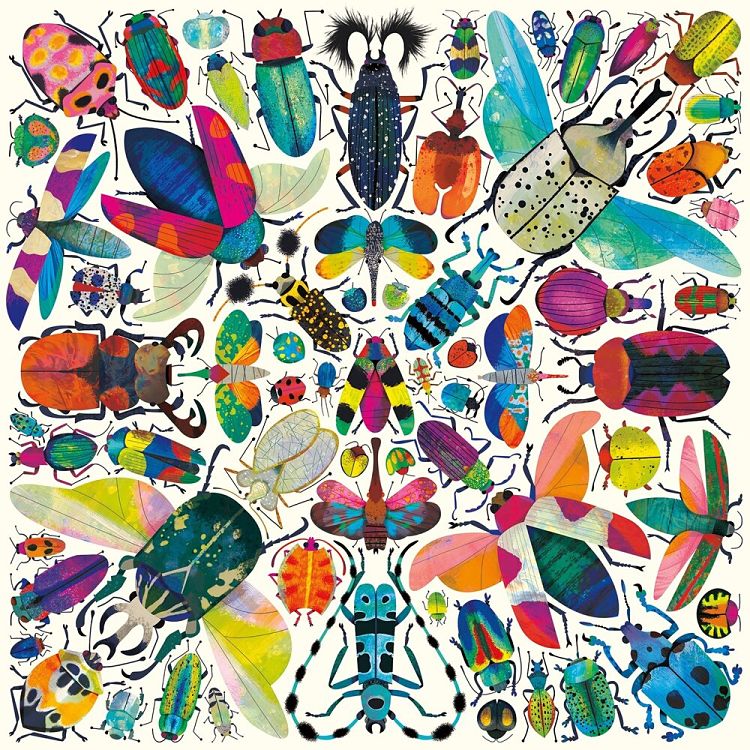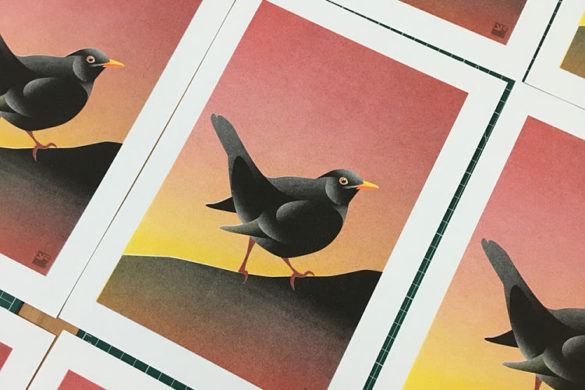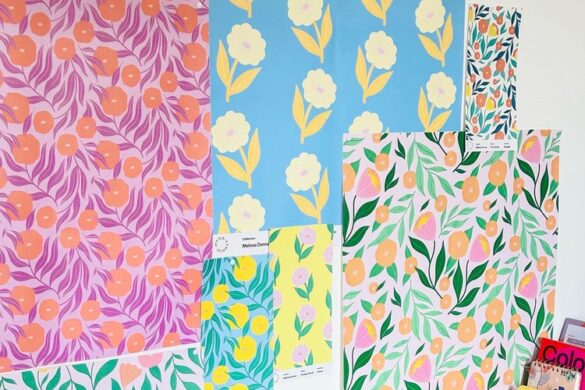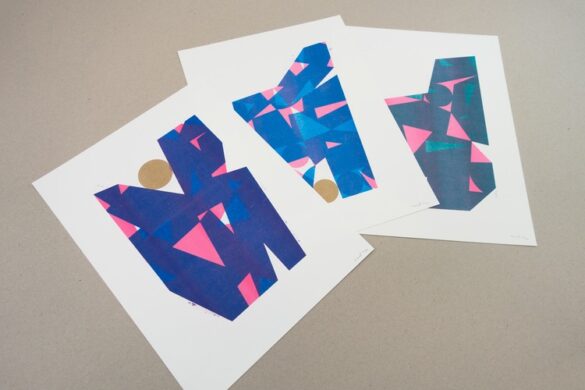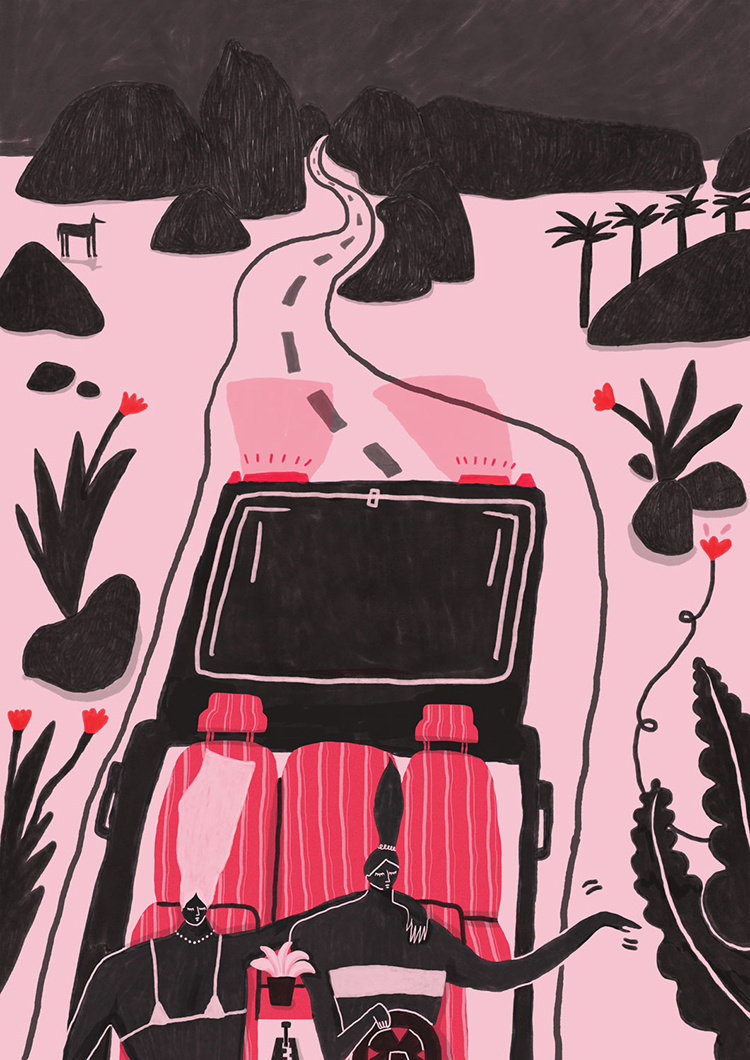For all the current hellishness, 2021 has started off pretty nicely for Natasha Durley’s illustration career: her distinctive vibrant, often luminescent-seeming depictions of animals and nature are getting their dues with the publication of new Ladybird books bearing her work.
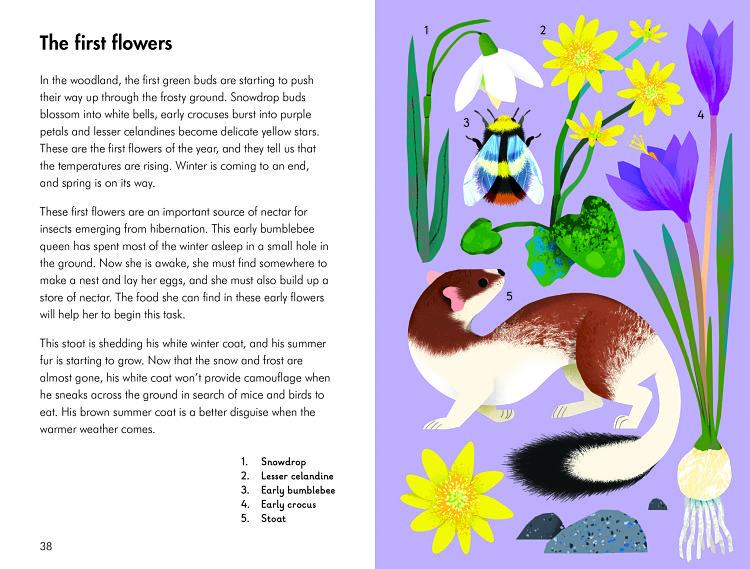
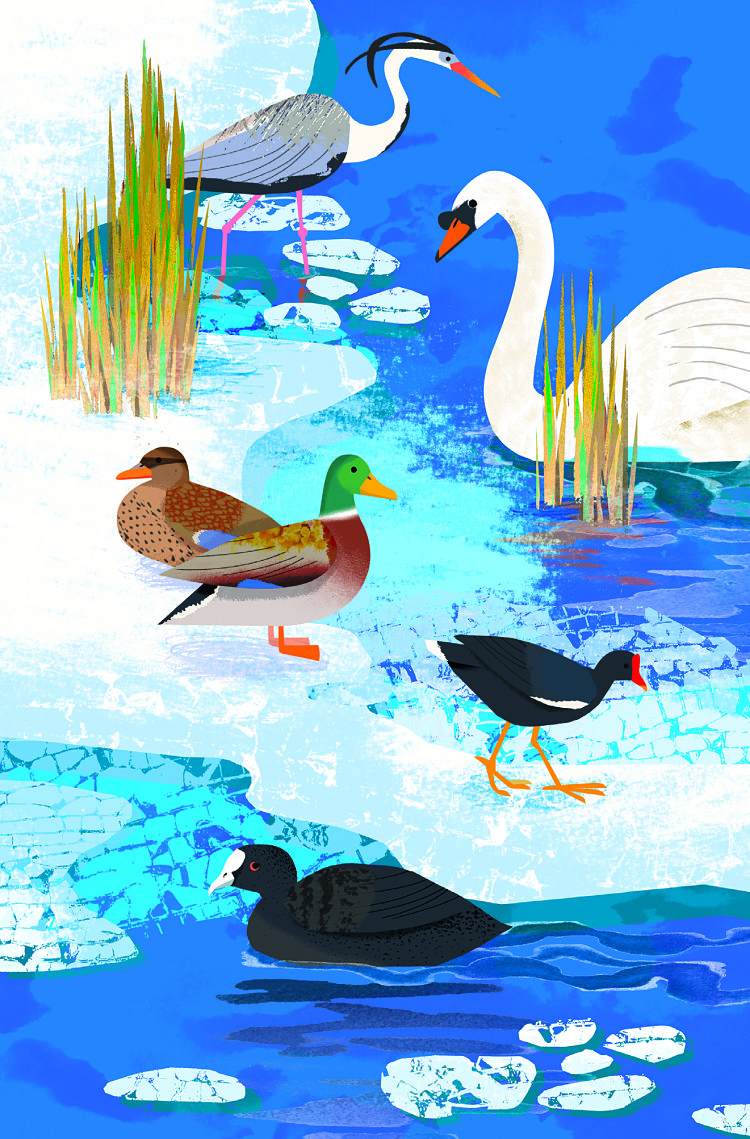 Durley began work on the series in 2019, and went on to create four pocket-sized, illustrated non-fiction ‘What to Look for in” books. Each depicts one season’s flora and fauna. The commission came as a “real surprise”, she says—and a very good one—having just come back from travelling (trying out the nomadic experience thing) when she received the email. “It absolutely blew me away,” she says. “You just instantly know the Ladybird books.”
Durley began work on the series in 2019, and went on to create four pocket-sized, illustrated non-fiction ‘What to Look for in” books. Each depicts one season’s flora and fauna. The commission came as a “real surprise”, she says—and a very good one—having just come back from travelling (trying out the nomadic experience thing) when she received the email. “It absolutely blew me away,” she says. “You just instantly know the Ladybird books.”
The publisher set out exactly what it wanted content-wise on each page, mainly detailing the specific flora and fauna relating to the relevant season explored in that book. Aesthetically, however, Durley was given free rein: “They found me for my style, so they were good with letting me be as free as possible.”
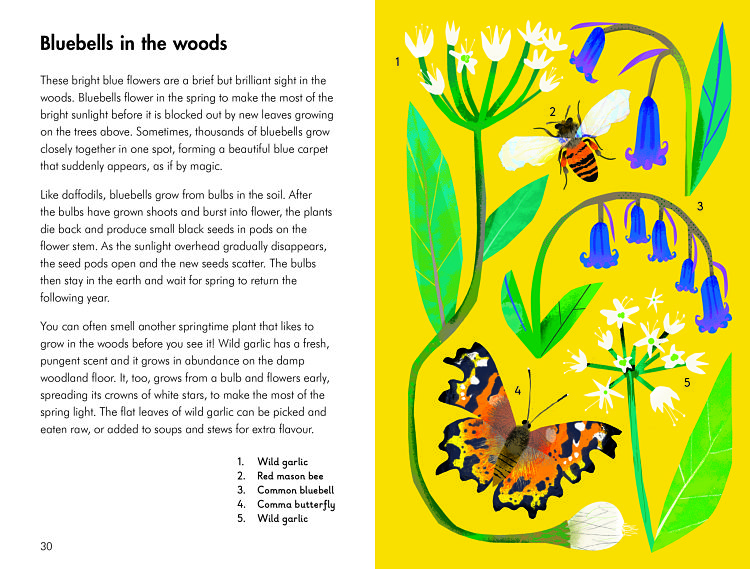 Having freedom stylistically but well-defined parameters in terms of what she was expected to depict was a godsend in a project with a pretty tight deadline, considering its scope–she had around a month to complete each book. That’s a hell of a lot of work when you consider Durley’s process: each animal is first sketched, then the major created using hand-cut paper before adding filters, using the pencil, editing colours and adding textures in Photoshop, often using those she’s photographed herself. “If I was left with too much freedom, I think I would have spent too long in deciding what to do. That structure was good.”
Having freedom stylistically but well-defined parameters in terms of what she was expected to depict was a godsend in a project with a pretty tight deadline, considering its scope–she had around a month to complete each book. That’s a hell of a lot of work when you consider Durley’s process: each animal is first sketched, then the major created using hand-cut paper before adding filters, using the pencil, editing colours and adding textures in Photoshop, often using those she’s photographed herself. “If I was left with too much freedom, I think I would have spent too long in deciding what to do. That structure was good.”
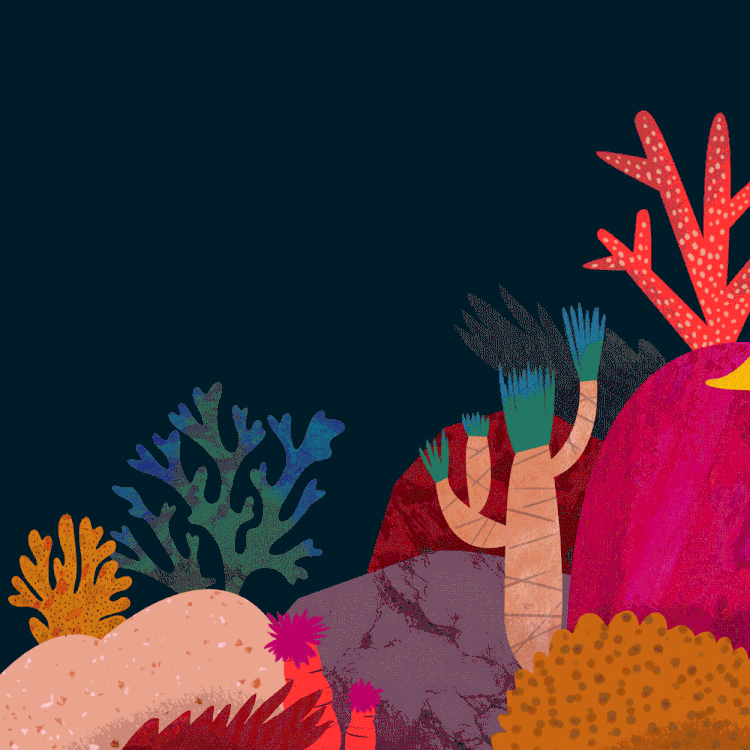 Born in Blackburn and based near Bournemouth on England’s south coast, I suggest that maybe having spent so many years by the sea (Durley took her illustration degree at Bournemouth University) has swayed her subject matter: there’s an absolutely mesmerising fish gif swimming across her online portfolio, just beneath him a manta ray swims in the other direction (Durley’s partner, William Benjamin Powell, has been tinkering with animating her images lately); sitting above an undersea scene replete with coral and an eel-like creature.
Born in Blackburn and based near Bournemouth on England’s south coast, I suggest that maybe having spent so many years by the sea (Durley took her illustration degree at Bournemouth University) has swayed her subject matter: there’s an absolutely mesmerising fish gif swimming across her online portfolio, just beneath him a manta ray swims in the other direction (Durley’s partner, William Benjamin Powell, has been tinkering with animating her images lately); sitting above an undersea scene replete with coral and an eel-like creature.
While she enjoys living by the sea, her underwater critters are just one part of a beautiful world of weird, wonderful animals that Durley’s depicted over the years. Her usual commissions are largely similar in many ways to the Ladybird project: she often works on animal-based imagery for children’s books, toys and puzzles; as well as occasional magazine editorial projects and in an unusual turn, a couple of podcast idents for the BBC, for which she created the textures and colour, and her partner designed letterforms.

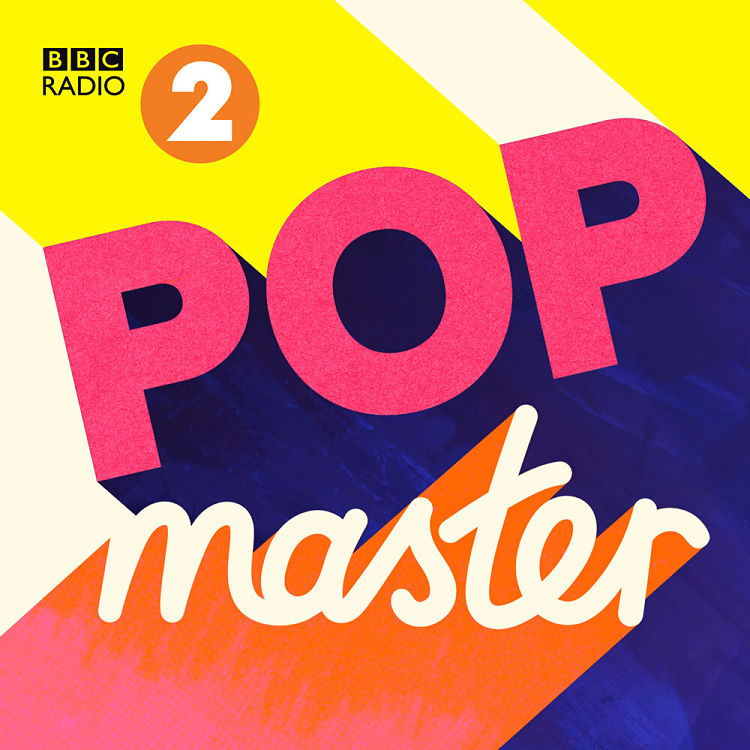 For her Creature Feature series, Durley approached the publisher Big Picture Press with her idea for a kids book bursting with weird and wonderful critters. With the first book published in 2018, this went on to become a series of books, each focusing on a different topic including Dinosaurs (the ‘fantastic fur’ spread, bursting with descendants of some of today’s very best creatures—weasels, stars, otters, lemurs, opossums, et al, is one of the most joyful things we’ve seen for a long time) and Oceans.
For her Creature Feature series, Durley approached the publisher Big Picture Press with her idea for a kids book bursting with weird and wonderful critters. With the first book published in 2018, this went on to become a series of books, each focusing on a different topic including Dinosaurs (the ‘fantastic fur’ spread, bursting with descendants of some of today’s very best creatures—weasels, stars, otters, lemurs, opossums, et al, is one of the most joyful things we’ve seen for a long time) and Oceans.
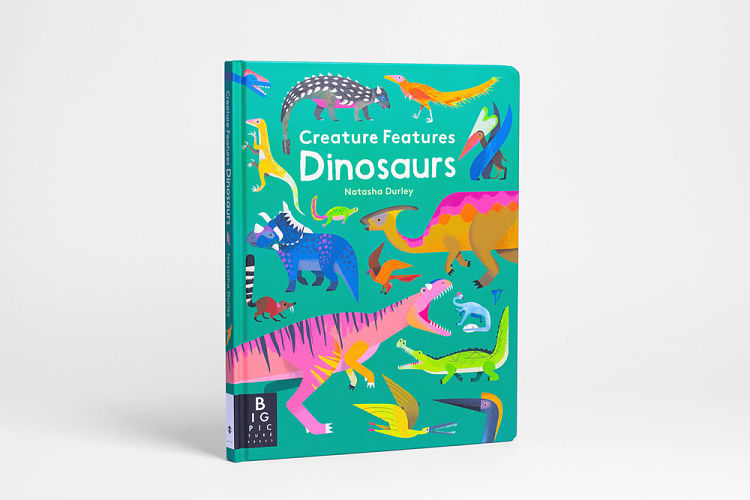
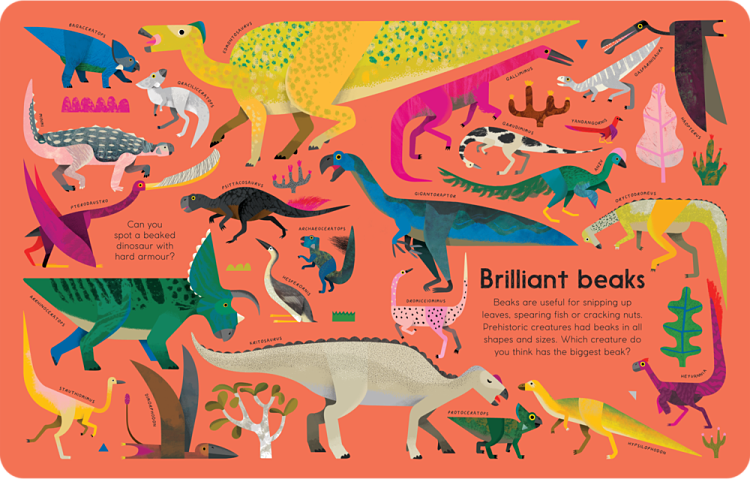 Following her graduation from Bournemouth, Durley has worked as a freelance illustrator since around 2014. Her time at art school was “absolutely amazing,” she says. “The course just seemed to have a lot of good people. Lisa Richardson had just started as the head of illustration and the first day, she just asked, ‘what is illustration? They got hairdressers to come in and they started cutting people’s hair, asking, ‘could this be illustration?’ There was a lot of freedom.”
Following her graduation from Bournemouth, Durley has worked as a freelance illustrator since around 2014. Her time at art school was “absolutely amazing,” she says. “The course just seemed to have a lot of good people. Lisa Richardson had just started as the head of illustration and the first day, she just asked, ‘what is illustration? They got hairdressers to come in and they started cutting people’s hair, asking, ‘could this be illustration?’ There was a lot of freedom.”
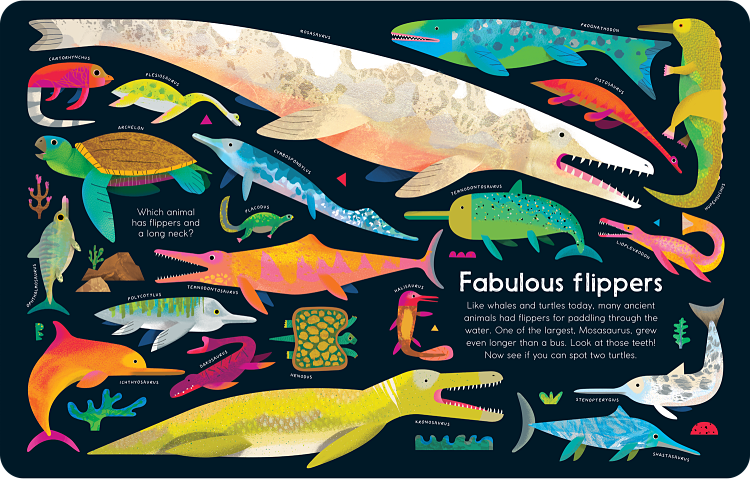 As with most grads, one of the trickiest things for Durley when she began to pick up freelance work was dealing with the business side: how much to charge for projects, how to negotiate realistic deadlines, that it’s ok to push back on fees and timelines and ultimately to say no when you have to. Having felt close to burning out a couple of times, Durley’s learned these dark arts through trial and error. One piece of advice she has, which she’s passing on from a visiting business teacher at uni, is to not always answer the phone if, say, your dream client calls and wants to work with you and asks how much you charge for a half-page illustration.
As with most grads, one of the trickiest things for Durley when she began to pick up freelance work was dealing with the business side: how much to charge for projects, how to negotiate realistic deadlines, that it’s ok to push back on fees and timelines and ultimately to say no when you have to. Having felt close to burning out a couple of times, Durley’s learned these dark arts through trial and error. One piece of advice she has, which she’s passing on from a visiting business teacher at uni, is to not always answer the phone if, say, your dream client calls and wants to work with you and asks how much you charge for a half-page illustration.
Since it’s a question that leaves so many of us floundering on the spot, the tutor advised letting it ring out to answerphone so you can hear what they’re asking (and re-listen as many times as you need), and buy yourself some extra time to think. “I almost destroyed myself once working myself into the ground and probably not asking for enough and then never saying no, never wanting to admit I’m struggling. After that, I was a bit more ruthless.”
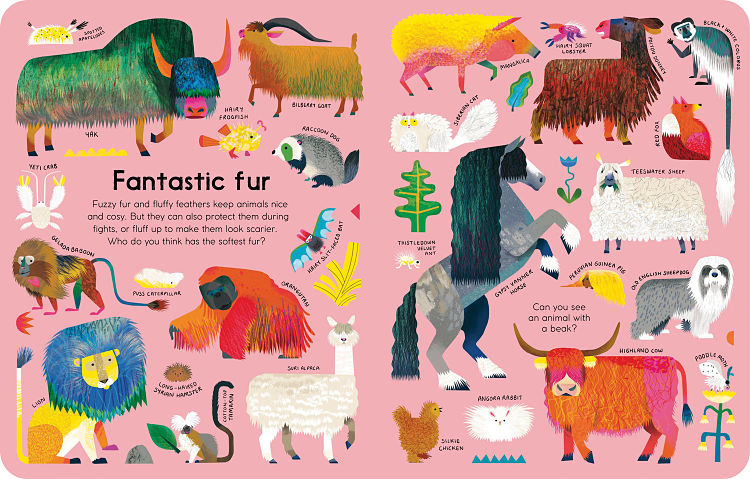 Although there’s a very English awkwardness around talking about money, one thing working in illustrators’ favour is a strong sense of community—and it never hurts to ask other people for help, who more than likely feel just as flummoxed as you. Durley has found that this community exists both on and offline, and is grateful to have found some “lovely” online followers of her work.
Although there’s a very English awkwardness around talking about money, one thing working in illustrators’ favour is a strong sense of community—and it never hurts to ask other people for help, who more than likely feel just as flummoxed as you. Durley has found that this community exists both on and offline, and is grateful to have found some “lovely” online followers of her work.
Instagram, however, can be a double edged sword. Clocking well over 11,000 followers, Durley finds that most of her work likely comes through the platform; but admits that sometimes it can feel “overwhelming” in light of the seemingly endless talent showcase there.
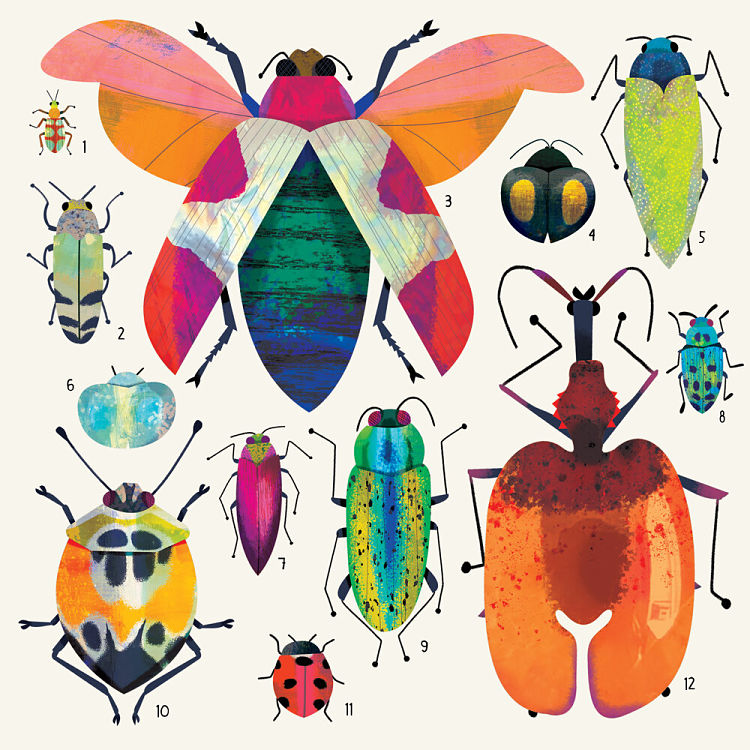 Her favourite animals to draw are insects: “they just really lend themselves to that layered paper cut, symmetrical look,” she says. “But I struggle with primates, monkeys… maybe that’s because I’m as savvy with drawing people, and they’re quite close to that… I like drawing animals, until it starts to look a bit too human!”
Her favourite animals to draw are insects: “they just really lend themselves to that layered paper cut, symmetrical look,” she says. “But I struggle with primates, monkeys… maybe that’s because I’m as savvy with drawing people, and they’re quite close to that… I like drawing animals, until it starts to look a bit too human!”
- Autobahn - November 26, 2021
- Alphabetical - November 12, 2021
- SOFA Universe - November 8, 2021

